- Home
- Thomas E. Sniegoski
Lobster Johnson: The Satan Factory
Lobster Johnson: The Satan Factory Read online
LOBSTER JOHNSON™: THE SATAN FACTORY © 2009 by Itzy, Kickass.so
No portion of this publication may be reproduced or transmitted, in any form or by any means, without the express written permission of the copyright holders. Names, characters, places, and incidents featured in this publication either are the product of the author’s imagination or are used fictitiously. Any resemblance to actual persons (living or dead), events, institutions, or locales, without satiric intent, is coincidental. Dark Horse Books® and the Dark Horse logo are registered trademarks of Dark Horse Comics, Inc. All rights reserved.
COVER DESIGN BY AMY ARENDTS
COVER PAINTING BY GREGORY MANCHESS
COPY EDITOR ANNIE GULLION
Published by Dark Horse Books
A division of Dark Horse Comics, Inc.
10956 SE Main Street
Milwaukie, OR 97222
darkhorse.com
Library of Congress Cataloging-in-Publication Data
Sniegoski, Tom.
Lobster Johnson : the satan factory / Thomas E. Sniegoski ; Lobster Johnson created by
Mike Mignola. -- 1st Dark Horse Books ed.
p. cm.
ISBN 978-1-59582-203-1
1. Heroes--Fiction. 2. Crime--Fiction. 3. Good and evil--Fiction. 4. Supernatural--Fiction.
5. Occult fiction. gsafd I. Mignola, Michael. II. Title. III. Title: Satan factory.
PS3619.N537L63 2009
813’.6--dc22
2009016250
First Dark Horse Books Edition: July 2009
ISBN 978-1-59582-203-1
ePub ISBN 978-1-62115-444-0
Printed in the United States of America
10 9 8 7 6 5 4 3 2 1
DEDICATION
For George C. Chesbro
—
ACKNOWLEDGMENTS
As it always is, much love to LeeAnne, and Mulder the Wonder Dog for tolerating my nonsense.
—
Special thanks to Mike Mignola for letting me take a crack at his awesome pulp hero.
—
Thanks are also going out to Christopher Golden for his friendship and awesome edits, Dave “the Giggling Ghost” Kraus, Eric Powell, Scott Allie, Liesa Abrams, James Mignogna, Don Kramer, Greg Skopis, Mom & Dad Sniegoski, Mom & Dad Fogg, David Carroll, Ken Curtis, Kim & Abby, Jon & Flo, Pat & Bob, Sheila Walker, and Timothy Cole and the various mugs down at Cole’s Comics.
—
Say good night, Gracie.
INTRODUCTION
—
Most twenty-first-century readers are likely unaware that the Lobster—the compelling crime-noir star of pulp stories, comic books, and low-budget Mexican horror films (as “Lobster Johnson”)—is thought to have been based on a real-life crime buster. The facts have become obliterated by the fiction, and thus it seems almost inevitable that this latest chapter in the enigmatic history of the Lobster will only create more questions.
As noted in The True History of Lobster Johnson, “Almost nothing is known about the ‘real’ vigilante crime fighter known as the Lobster—only that between February 1932 and December 1938, more than a hundred (by some accounts as high as 250) organized-crime figures, Axis spies, and saboteurs were found murdered in and around New York City and Chicago, a claw symbol burned into their foreheads. A few eyewitness accounts described ‘a masked man with lantern eyes dressed all in black,’ but no photographs of the Lobster are known to exist, only police photos of his victims and a few paper calling cards discovered at some of the crime scenes. Conspiracy theorists have long maintained that in 1938, the Lobster was recruited by the United States military to head several top-secret operations against the Nazis in Europe, and that he was actually killed during one of these operations. The United States government, however, has always denied the existence of these missions and any knowledge of the person known as the Lobster.”
Researchers may argue over the question of whether the Lobster actually existed at all, but his fictional counterpart’s history is indisputable. The character first appeared in a novel-length pulp story, “The Long Arm of Death,” in the September 1940 issue of Weird Detective magazine. His “creator,” retired New York City police detective Norvell Cooper, claimed in numerous interviews to have known the “real” Lobster, and that his stories had been adapted from true events. But his claims were dubious. Once again from The True History of Lobster Johnson:
“Given Cooper’s tendency to blow up major New York City landmarks in his stories (he destroyed the Empire State Building twice), that seems unlikely. In an interview, Cooper admitted that he did not know the identity of the Lobster and that he had created the fictional Lobster’s alter ego—wheelchair-bound millionaire Walter Johnson, inspired by reclusive Park Avenue bank president D. S. Johnson.”
During the 1950s, legendary low-budget Mexican horror-film auteur Eduardo Fernandez directed a string of movies based on the character, renamed “Lobster Johnson” for the films (apparently appropriating the last name “Johnson” from the alter ego Cooper had given the Lobster in his stories). Badly dubbed and edited versions of a number of these films appeared on American television quite frequently in the 1960s. While the Lobster Johnson films never quite reached the level of popularity of Batman or Zorro, a generation of American children became familiar with this variation on the character, giving rise to the public’s adaptation of the name “Lobster Johnson” to refer even to the pulp hero of Norvell Cooper’s stories.
The last of Cooper’s eight Lobster stories, “Death Means Justice,” appeared in the final issue of Weird Detective in February 1942, but that same year the Lobster debuted as a headliner in his own comic-book series, Lobster Comics, which ran thirty-eight issues before it was canceled in 1946. Two equally forgettable movie serials were released in 1945, but never achieved the cult status conferred on Fernandez’s Lobster Johnson films, the last of which appeared in 1959.
And now, fifty years later, the book reopens on a bizarre new chapter of the history of the Lobster.
In July 2004, an iron strongbox was found in a long-
abandoned gas station in Oakdale, California. The gas station had been scheduled for destruction and a man named Simon Chesmore—the grandson of the recently deceased owner—had sold the property to the developers of an office park. Chesmore discovered the box and soon learned of the suspected value of its contents, selling at auction several novel-length manuscripts featuring the exploits of the Lobster.
Yet this is clearly not the same Lobster featured in the work of Norvell Cooper. Unsettling and strange as these stories are, thus far nothing in them has been successfully disproved. The Empire State Building survives each of these newly discovered adventures. These books—of which The Satan Factory is apparently the oldest—are unquestionably not the work of Cooper, himself a dreadful writer. And, of course, these manuscripts do not feature the wheelchair-bound alter ego invented by Cooper for his own tales.
So who is the actual author? And are these true accounts?
Further research has not provided an answer. There is no evidence that a police officer by the name of Jacob Hurley served in the New York City police department during the time period of this novel. However, painstaking research has unearthed records of an officer who shared the initials JH and who retired to Modesto, California, in 1932 with his family, and whose uncle, Karl Hartung, owned and operated the gas station in question from 1946 to 1949.
As we have been unable to locate any surviving members of that officer’s family, and thus have no way to verify the events of this novel, we have no choice but to publish it as fiction. However, it seemed appropriate to present you, dear reader, with all of the facts at hand, so
that you can formulate your own judgment as to the tale’s veracity.
For myself, I can only say that I pray The Satan Factory is mere fiction. I shudder to think of the alternative.
—
Thomas E. Sniegoski
Stoughton, Massachusetts
February 13, 2009
Mexico, 1932
—
Dr. Jonas Chapel sat in the far back corner of the ramshackle cantina, a half-empty bottle of cheap tequila on the table in front of him.
The worm was laughing at him.
He reached out with a trembling hand and grabbed the unlabeled glass bottle, watching as the gold liquid swirled around inside, moving the worm that rested at the bottom.
“I’ll fix you,” the gaunt and unshaven middle-aged man slurred. He tipped the bottle and filled his glass again. Even immersed in alcohol, Chapel imagined that he could still hear the larva, amused by the failure of his life.
He planned to drink the entire bottle of tequila just to get to the insect. How dare it mock him?
Do you know who I am? he wanted to ask the bug, but was afraid the worm would just laugh all the harder.
Carefully, Chapel brought the glass of alcohol to his mouth, using both hands to keep the glass from shaking. “Don’t want to waste a drop,” he repeated over and over until the rim of the glass touched his lips, and he tipped it back, spilling the corrosive fluid down his throat.
His eyes burned and watered, and he had to stifle a cough as he focused on the worm at the bottom of his bottle.
It’s just a matter of time, he told himself.
But the bug was right to make fun of him. He was a failure and deserved any amount of ridicule heaped upon him; why else would he be here, in this dilapidated structure, in an unnamed Mexican town?
Hiding.
As he had done nearly a million times before, Jonas Chapel tried to put his finger on where it had all gone wrong.
His hands seemed steadier after his last drink, and he reached for the bottle to pour another. The tequila helped him to remember, painful details floating to the surface of his memory on a current of yellow liquid.
He’d been considered the golden boy, graduating from Yale Medical School at the top of his class, and then inheriting the Chapel family fortune and all that it entailed. Jonas Chapel was on top of the world, and there wasn’t a soul that could knock him from his perch.
Or so he had believed.
Jonas had always had a dark fascination for the illicit, the forbidden, the taboo, and found himself drawn to some of the seedier elements available to him: liquor, drugs, gambling, rubbing elbows with those of a far more colorful and dangerous nature.
That was the world he reveled in, embracing it as his own, even as the world of high society he had inherited began to crumble.
Within a matter of months he’d lost everything—his medical practice, the family fortune—and he found himself in debt to the illegal gambling houses he’d come to frequent so regularly.
That was when he’d first entertained the idea of escape, planning to flee Manhattan and his debts, to secretly set up residence elsewhere, in Chicago, or maybe even Boston. But he hadn’t been fast enough.
Chapel tossed back the latest glass of tequila with a grimace.
He’d overslept after a particularly long night of drinking and had awakened to find that he wasn’t alone. He hated to remember how he’d begged them not to hurt him, and how the brutish thugs had just laughed at him, mocking the silk pajamas he was wearing as they dragged him from his penthouse apartment and shoved him inside the trunk of a car that smelled of something dead.
He had honestly thought he would die that night. They were going to take what he owed in blood, and make an example of him to any other who might consider trying to run from a debt.
They’d hauled him from the foul-smelling trunk after a long and tortuous ride, his dignity in tatters. He’d expected to find himself in some isolated, wooded area, but instead he was standing in front of an opulent mansion on the outskirts of the city.
A home where, he soon learned, the Devil resided.
Chapel had heard of Rocco “The Devil” Fazzina, but had never had the pleasure of meeting him. Fazzina was one of New York’s up-and-coming crime figures, along with Red O’Neill and Salvatore Decante. Each of them had their territories staked out, ruling their own sections of the city with an iron fist. All of them harbored the desire to be ruler of it all, each secretly planning how to take his competitors out for the count.
It was said that Fazzina had the most ambition, and many in the underworld predicted it would only be a matter of time before the gangs were at war for the coveted prize of the entire city.
Chapel had never cared much about gangland politics. It had little to do with him, so long as he continued to have places to drink and lay a bet.
But as he stood in front of Rocco Fazzina’s home, he realized it did have a great deal to do with him. For it was Fazzina’s liquor he had been drinking; the unpayable tabs he’d run up were at establishments owned by the mobster.
Now here he stood, in his wet, grease-stained pajamas, about to have an audience with the Devil. And it would change his life.
Chapel poured himself more tequila, getting closer to the worm, but he no longer heard the giggling insect. He was lost in the memory of the first time he’d stood in the presence of Rocco Fazzina.
The man was large, built like a caveman. He sat, legs crossed, in a high-backed leather chair, a roaring fire burning in the hearth behind him.
The fires of hell, Chapel remembered thinking.
The Devil had given him three choices that night. He could pay back all the money he owed; he could be slowly beaten to death and then his broken body fed to the hungry guard dogs; or he could go to work for Fazzina, the Devil’s gang his exclusive practice.
Chapel’s unhealthy vices had left him nearly penniless, and despite his problems, he still had quite an aversion to death. There was only one logical choice, the only option left to him.
And so that was the night he made a deal with the Devil. They had shaken on it, Chapel’s delicate hand wrapped in Fazzina’s overly warm, ape-like mitt.
In a matter of hours Chapel’s debts were forgiven, and he no longer feared eviction from his penthouse apartment. Everything had been made right. Except that now, he owed the Devil.
Chapel was able to continue his life of decadence and excess, but Fazzina made sure he paid his dues by keeping his men in shape to fight the war that was brewing. He never knew when he’d be needed. Fazzina’s boys would show up at his plush apartment at all hours of the day and night. They would be beaten, stabbed, or shot, and always bloody. Chapel cleaned and sutured their wounds, changed their dressings, and even did a little minor surgery on occasion, saving them from trips to Bellevue and the prying questions of city doctors.
And that was how it had gone for the longest time.
As he sat in the darkness of the cantina, in the midst of the stifling Mexican heat, Chapel felt suddenly cold. This was the part of his story that he despised, where it had all gone so horribly wrong. His hands were shaking again, despite the alcohol coursing through his veins. Gripping the nearly empty bottle, he decided that he would need more—much more—if he were going to continue. The memories were like pieces of jagged glass rubbed across the surface of his brain.
That fateful night had been like so many others, filled with all manner of debauchery beneath the roof of one of Fazzina’s exclusive clubs. Chapel had been well on the way to mind-numbing inebriation, when his drinking was suddenly interrupted by two of Fazzina’s top honchos. There was an air of urgency about them as they nearly dragged him out into the cold New York winter’s night, never even bothering to allow him to retrieve his coat.
He remembered asking them what was happening, his words slurred by drink. It had seemed to be the usual story—two of Fazzina’s men roughed up in an altercation with Red O’Neill’s followers.
A
nd they wanted Chapel to fix them up.
He was blind, stinking drunk that night, but it didn’t matter. His job was to take care of Fazzina’s men.
The two injured men had already been taken to Chapel’s makeshift dispensary created in an unused bedroom of his penthouse. There was blood everywhere, but the men still lived. Barely.
Chapel remembered standing there, staring at his patients as their lives slowly bled away. Even drunk, he knew it would take a miracle to save them, and he tried to tell that to his escorts—until he’d felt the cold steel barrel of a gun at the side of his head.
What choice had he had?
Chapel threw himself into the task of saving these men’s lives. Their bodies had been riddled with bullets, the amount of blood they had lost nearly critical, but somehow he had managed to keep them breathing. Moving from one to the other, he plucked bullets from the puckered holes in their flesh and dressed their wounds.
Eight. Eight bullets between them, and still they continued to breathe.
Looking back, Chapel wasn’t sure if it had been an example of his great skill, or pure luck; although luck had very little to do with the events that followed.
Satisfied that he had done his job, the two thugs left him with his patients, heading off to inform Fazzina that Chapel had once again proved his worth.
Chapel remembered wanting—needing—a drink. As the door closed on Fazzina’s goons, he headed to the liquor cabinet to fortify his receding drunk. He deserved this reward, he recalled thinking, as he eagerly nursed at the bourbon bottle like it was a mother’s breast.
He’d finished off most of the bottle’s contents when he became aware of someone moaning behind him. One of his patients was beginning to wake up. Chapel had a vague recollection of giving the poor slob a shot of something . . . an injection to kill the pain, before he himself passed out upon the floor.
It was some time later, when he awoke, his body thirsty for another drink, that he had realized his mistake. It had been an honest error, certainly something done in hospitals all across the country, but the end result was catastrophic. Chapel had given the man too much painkiller, and now he was dead.

 Dark Exodus
Dark Exodus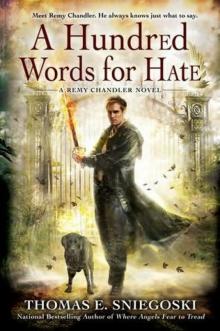 A Hundred Words for Hate rc-4
A Hundred Words for Hate rc-4 The Fallen
The Fallen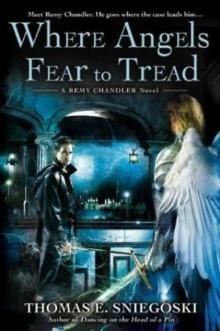 Where Angels Fear to Tread rc-3
Where Angels Fear to Tread rc-3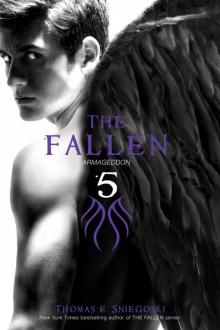 Armageddon
Armageddon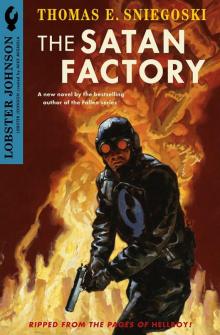 The Satan Factory
The Satan Factory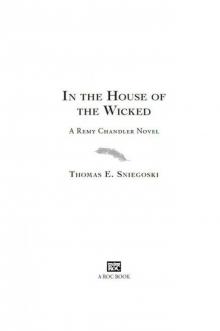 In the House of the Wicked: A Remy Chandler Novel
In the House of the Wicked: A Remy Chandler Novel A Hundred Words for Hate
A Hundred Words for Hate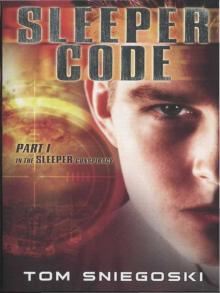 Sleeper Code
Sleeper Code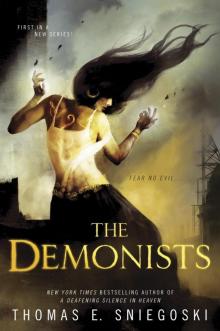 The Demonists
The Demonists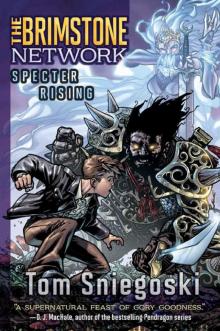 Specter Rising (Brimstone Network Trilogy)
Specter Rising (Brimstone Network Trilogy)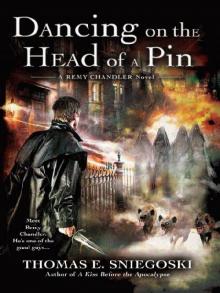 Dancing on the Head of a Pin
Dancing on the Head of a Pin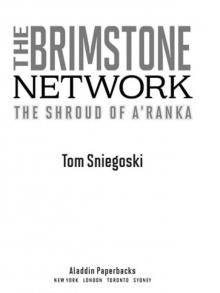 The Shroud of A'Ranka (Brimstone Network Trilogy)
The Shroud of A'Ranka (Brimstone Network Trilogy)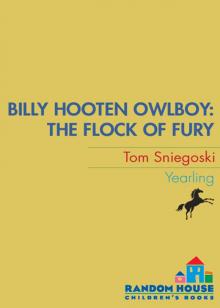 The Flock of Fury
The Flock of Fury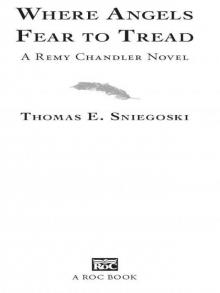 Where Angels Fear to Tread
Where Angels Fear to Tread Leviathan
Leviathan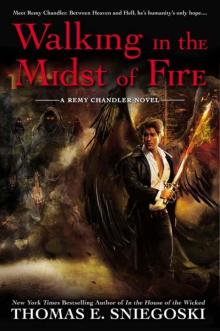 Walking In the Midst of Fire: A Remy Chandler Novel
Walking In the Midst of Fire: A Remy Chandler Novel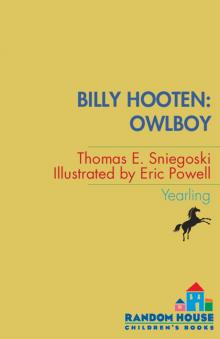 Billy Hooten
Billy Hooten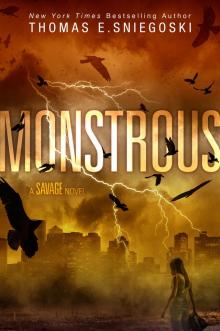 Monstrous
Monstrous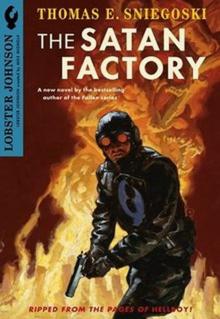 Lobster Johnson: The Satan Factory
Lobster Johnson: The Satan Factory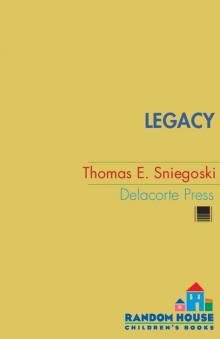 Legacy
Legacy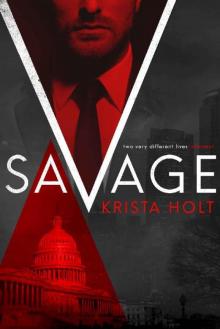 Savage
Savage Walking In the Midst of Fire rc-6
Walking In the Midst of Fire rc-6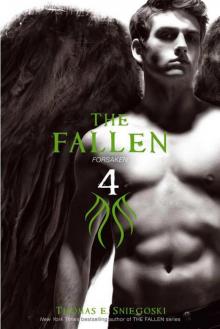 The Fallen 4
The Fallen 4 A Deafening Silence In Heaven
A Deafening Silence In Heaven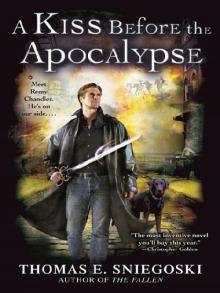 A Kiss Before the Apocalypse
A Kiss Before the Apocalypse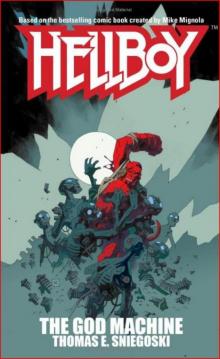 The God Machine
The God Machine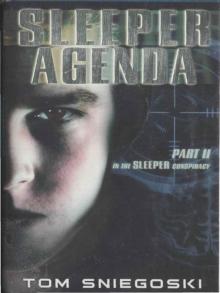 Sleeper Agenda
Sleeper Agenda The Girl with the Destructo Touch
The Girl with the Destructo Touch Dancing On the Head of a Pin rc-2
Dancing On the Head of a Pin rc-2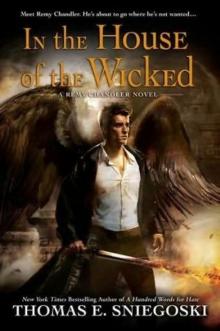 In the House of the Wicked rc-5
In the House of the Wicked rc-5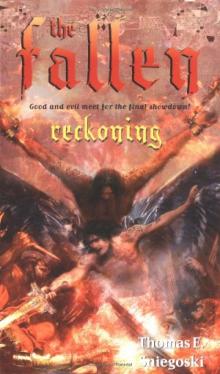 Reckoning f-4
Reckoning f-4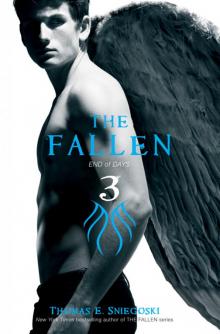 The Fallen 3
The Fallen 3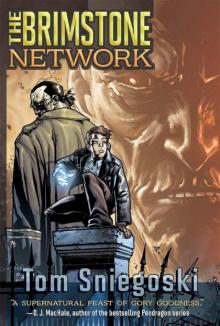 The Brimstone Network (Brimstone Network Trilogy)
The Brimstone Network (Brimstone Network Trilogy)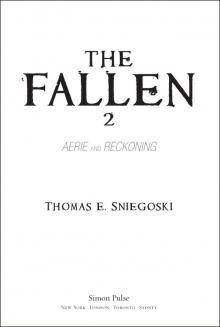 The Fallen 2
The Fallen 2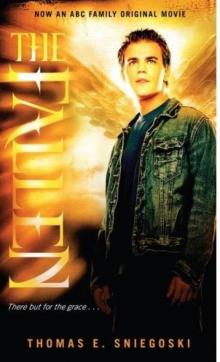 The Fallen f-1
The Fallen f-1